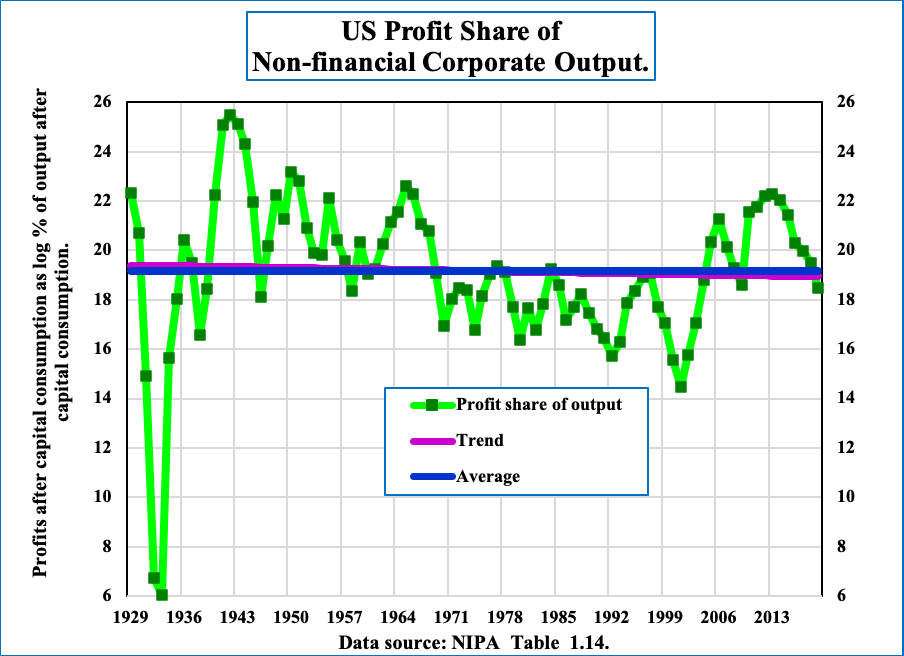Andrew Smithers responds to Lance Taylor’s rebuttal.
In his original paper Professor Taylor claimed that “The profit share of income grew across business cycles at 0.4% per year, or by more than 20% (that is, by eight percentage points) over five decades.” I responded that “In fact the US profit share is stationary and was in 2019, before the pandemic, slightly below its mean reverting average for US non-financial corporate business and slightly above if financial business is included.”

I illustrate these data for non-financial companies in the chart. The mean reversion of the profit share is shown by the closeness of the mean to the trend.
In his reply Professor Taylor claims that “after 1970 the gross corporate profit share in US domestic income rose steadily.”
There are two differences between us. (i) The definition of the profits that should be used to measure their share of output and (ii) the time period used.
(i) Professor Taylor choses to ignore rather than dispute my point that the labour and capital shares of output, which together must add up to 100%, must be measured in a comparable way in accordance with the definition of income set out in Value and Capital: An Enquiry into Some Fundamental Principles of Economic Theory by J.R. Hicks, Oxford University Press (1939). As the point is not disputed I take it that Professor Taylor is unable to do so.
(ii) The data on the profit share of corporate output are available from 1929, i.e. 41 years before Professor Taylor chooses the start of his measure. This is contrary to the important principle that in order to avoid “data mining” all available data should be used.
The importance of the principle in practice can be seen in the Chart. Using 1970 as the starting date the profit share of net output has risen by 1.8 percentage points, but since the data started in 1929 it has fallen by 4.7 percentage points and the decline since the peak in 1942 has been 8.8 percentage points.
Anybody, including Professor Taylor, will come to the wrong conclusions if they use the wrong data and do not use all that are available.
Lance Taylor’s final response to this contribution can be found here.



